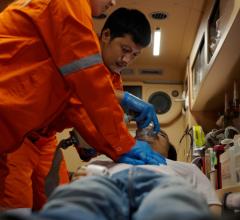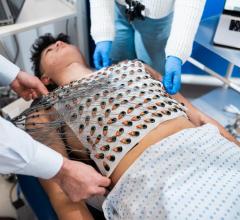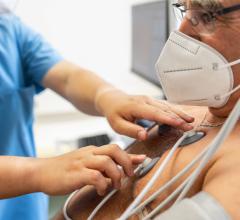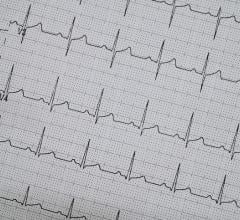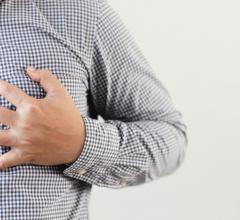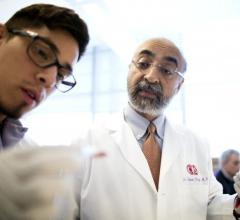
A new treatment to achieve return of spontaneous circulation (ROSC) in refractory cardiac arrest patients is the use of resuscitative endovascular balloon occlusion of the aorta (REBOA). The images show the balloon seen deployed on an angiogram and an illustration showing its placement in the aorta.
Out-of-hospital cardiac arrest (OHCA) continues to be overwhelmingly fatal despite cardiopulmonary resuscitation (CPR) and many other advances in pre-hospital care. It takes the lives of almost 350,000 Americans each year and has a dismal 10% survival to hospital discharge.[1] The biggest challenge of OHCA is achieving sustained return of spontaneous circulation (ROSC) in refractory cardiac arrest and therefore represents a large opportunity for advancement.[2,3]
Extracorporeal cardiopulmonary resuscitation (E-CPR) for OHCA has been increasingly utilized in various pockets around the world and has been shown to improve survival and organ recovery in refractory cardiac arrest. However, the treatment is extremely resource intensive and is not feasible for the vast majority of patients.
An alternative treatment that is emerging to achieve ROSC in refractory cardiac arrest is resuscitative endovascular balloon occlusion of the aorta (REBOA).
REBOA has primarily been used for traumatic non-compressible torso bleeding as a bridge to definitive hemostasis control in the operating room. It involves placing a balloon catheter from the femoral artery up into the aorta of bleeding patients. When the aortic occlusion balloon is inflated, there is improved coronary and cerebral blood flow above the balloon with controlled permissive hypotension below the balloon. Besides trauma, it has been used for other bleeding applications like post-partum hemorrhage and gastrointestinal bleeding. It has even been deployed in the pre-hospital setting and was first performed roadside for a trauma patient by London’s Air Ambulance in 2014.
By combining improved coronary and cerebral perfusion with its relatively simpler approach and wider availability than E-CPR, REBOA may ultimately prove to be the best pre-hospital treatment for OHCA to achieve ROSC or may even act as a pre-hospital bridge to in-hospital E-CPR.
REBOA to Aid Return of Spontaneous Circulation in Cardiac Arrest
Various animal studies have investigated REBOA for non-traumatic cardiac arrest and show an increase in central aortic pressure when the balloon is deployed in the descending thoracic aorta, along with improved coronary perfusion, cerebral perfusion, end-tidal carbon dioxide (ETCO2), and mortality.
One of the difficulties with traditional advanced cardiac life support (ACLS) measures is that it heavily relies on epinephrine to achieve ROSC.
Epinephrine helps improve central aortic pressure, but often at the expense of brain tissue. Unfortunately, only 8% of American patients with OHCA survive with a good neurological outcome.[4] Interestingly, a recent animal study from Alice Hutin and her group at the University of Paris showed that REBOA was as efficient as epinephrine to facilitate ROSC in swine but unlike epinephrine, REBOA increased cerebral blood flow and therefore might avoid the detrimental cerebral effects during CPR.[5]
Animal studies have been so convincing that they have paved the way for two small pre-hospital human feasibility trials, namely Lorenzo Gamberini’s Italian series, that showed sustained ROSC in four out of eleven patients.[6] Also, Dr. Jostein Brede’s Norwegian study showed sustained ROSC in six out of 11 patients.[7]
Brede has pushed this further and is now conducting a 200 patient randomized controlled trial (REBOArrest.com) that has already enrolled its first patients.[8] There are also institutions, such as Yale New Haven Hospital in Connecticut, led by James Daly, M.D., and University Hospital in Salt Lake City, Utah, led by Austin Johnson, M.D., that are using REBOA under research protocols for OHCA in their emergency departments.
How the REBOA Technology Works
Initial aortic occlusion devices were borrowed from the tools of endovascular aortic aneurysm repair for which they are used to mold aortic stent grafts. These larger profile 12 French aortic occlusion balloons often require femoral artery surgical cutdowns and would not be suitable for pre-hospital use. Recently, lower profile devices have been developed that decrease the time and skill required for deployment.
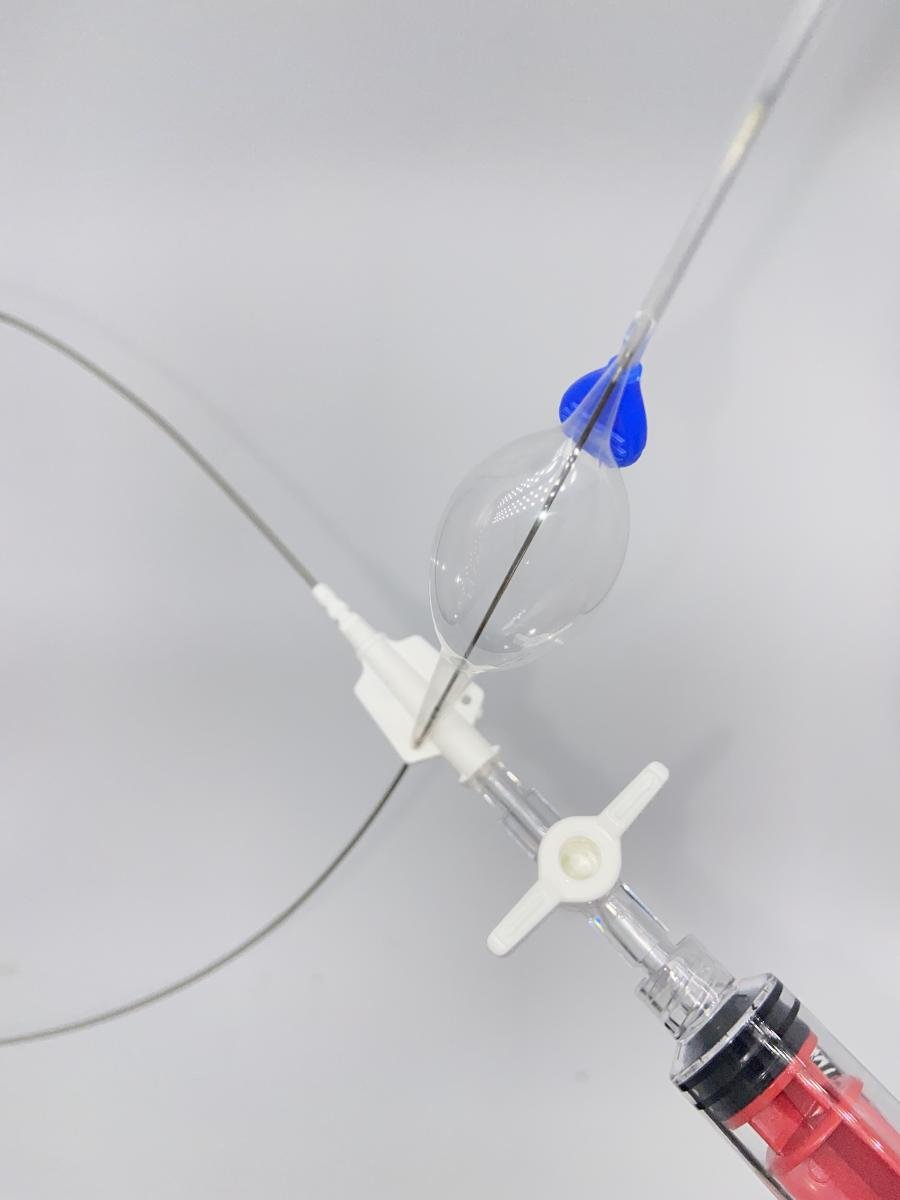
The COBRA-OS (Front Line Medical Technologies) is the lowest profile aortic occlusion device with FDA clearance at 4 French. In a first-in-human feasibility trial, the device was deployed in an average of 70 seconds from skin to aortic occlusion. The device is guidewire free, does not require an over-the-wire technique, and has a floppy J-tip leading edge to prevent aortic branch cannulation. It also has markers on the device to indicate thoracic aortic positioning at 48 cm from the femoral sheath. A low profile, simple device like this may be the ideal pre-hospital aortic occlusion device and may even be able to be deployed by non-physician advanced paramedics in the future.
The latest advancements in REBOA technology demonstrate potential feasibility for deployment in the pre-hospital setting and offer several advantages over more expensive and complicated treatments like E-CPR. Animal studies consistently show that REBOA causes major physiologic improvements that should help tip the balance towards ROSC during CPR. Additionally, early feasibility human trials are showing promise.
It will be an exciting time over the next few years as the data grows on the utility of REBOA for both in-hospital and out-of-hospital cardiac arrest and ultimately where it fits in relation to E-CPR. It will be important to keep responsibly pushing ideas and technology forward to help save our sickest patients. Implementing cost-effective treatments earlier in our patients’ care pathways will be key to breaking down some of the biggest treatment barriers.
About the Author
Adam Power, M.D., is an associate professor in the Division of Vascular Surgery at Western University in London, Ontario, Canada. Power completed a general surgery residency at McMaster University and a vascular surgery fellowship at Mayo Clinic. Power's research interests include innovation and medical device development and he is chief medical officer of Front Line Medical Technologies Inc.
Find more Sudden Cardiac Arrest content
References:

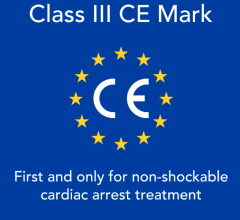
 September 09, 2025
September 09, 2025 
